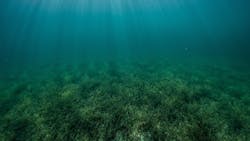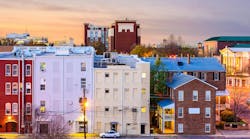The U.S. Environmental Protection Agency (EPA) Gulf of Mexico Division has named several winners of its Gulf Guardian Awards program.
The Gulf Guardian Awards were developed to honor the businesses, community groups, individuals, and agencies that work to keep the Gulf of Mexico healthy and productive. The Gulf Guardian Awards have been recognized on a biannual basis since 2000.
Winning projects often feature restoration, environmental education, or community engagement. The program honors winners in first, second, and third place across several categories.
“The Gulf of Mexico is a vulnerable ecosystem that requires innovative approaches and proactive measures to protect this national resource,” said Marc Wyatt, Director of the Gulf of Mexico Division, in a press release. “Over the past two years, the Gulf Guardian award winners have continued to think “outside of the box” during challenging circumstances due to COVID-19. These Gulf Guardian Awards are an important way to recognize the valuable efforts of all their hard work to protect the environmental health of the Gulf of Mexico.”
Restoration Partnership
The Nature Conservancy of Alabama won 1st place in the 2022 Gulf Guardian Awards’ Partnership category for its Lightning Point Restoration Project located in Bayou la Batre, Ala. The partnership recipients are: the City of Bayou La Batre, the Alabama Department of Conservation and Natural Resources, Mobile County, and the National Fish and Wildlife Foundation.
The Lightning Point Restoration Project constructed one mile of overlapping segmented breakwaters and jetties, and utilized more than 240,000 cubic yards of dredged material to create 40 acres of marsh and upland habitats and 10,000 linear feet of tidal creeks. EPA says that this project resulted in creating diverse habitats to support a wide range of fish, shellfish, and birds, while protecting this locally important waterfront area of this iconic town for fishing community culture.
Youth Environmental Education
The University of Southern Mississippi (USM) Marine Education Center won 1st place in the Youth Environmental Education category for its Community Resilience in the Classroom project. The project promotes an awareness of watersheds and their influence on the Gulf.
USM worked with the Mississippi Alabama Sea Grant Consortium to develop the educational program with local K-12 schoolteachers. The program promoted watershed awareness through classroom and field instructions in climate change and rising sea level, with a focus on high tide flooding and increased storm surge. EPA says that, since 2016, over 1000 students form 12 schools in Mississippi and Alabama have completed the program.
Seagrass Monitoring
The Gulf of Mexico and the Seagrass Community of Practice (CoP) was honored for their collaboration to identify best practices in the monitoring, conservation, and restoration of seagrass.
“The GOMA Seagrass Monitoring CoP acts as a bridge between scientists and managers to encourage collaboration and implementation of actionable science across the Gulf,” said Scientist Emeritus Lawrence Handley in a press release. “The GOMA Seagrass Monitoring CoP has initiated a Tier Approach to Seagrass Monitoring, that continues to provide support for implementation of seagrass monitoring across the Gulf.”
The CoP has been working with scientists and resource managers in the Gulf since 2017, providing workshops, webinars, dynamic reports, and more.
Home Wastewater Inspections
The St. Tammany Parish Government & Pontchartrain Conservancy were honored for their Home System Inspection project, which helps improve beaches, living marine resources, and water quality.
St. Tammany Parish established a partnership with Pontchartrain Conservancy to improve watersheds in the Parish. The Conversancy conducted door-to-door inspections on home wastewater systems, providing residents with instructions on proper operation and maintenance. By the project’s end, 347 onsite wastewater systems and 82 septic tanks became compliant as a direct result of the Conservancy’s inspection and education.
“I am incredibly proud of the efforts of our team who work diligently to prioritize the needs of our citizens,” said Mike Cooper, St. Tammany Parish President, in a press release. “It is satisfying to know that our inspections of home wastewater treatment systems in the Bayou Liberty Watershed has improved the water quality and the quality of life for our citizens.”
Community-Driven Science
The Houston Advanced Research Center was honored for its community-driven scientific analysis project, the Galveston Bay Report Card.
The program employs an annual analysis of 22 different environmental indicators to measure habitat, water quality, human health risk, pollution sources, wildlife, and coastal change. The results hope to influence the direction of environmental work. EPA says that the program serves as the model for watershed report cards, with outreach efforts directly connecting to 5,7000 people each year.
“Together with our friends at the Galveston Bay Foundation, we have created a resource that makes scientific understanding more accessible and provides communities with a connection to their environment,” said Research Scientist Erin Kinney in a press release. “Our mission now is to empower the Bay’s residents to become conservation leaders and instruments of change in their communities.”
Marsh Restoration
The Coastal Bend Bays and Estuaries Program (CBBEP) was honored for its Egery Flats Restoration Project.
The project restores water flow to the Egery Flats system and reduces salinity for over 600 acres of marsh, seagrass, and tidal flat habitats. The Egery Flats marsh area, a 600-acre basin, has lost 100 acres of emergent marsh in the past 60 years. CBBEP is currently working with local agencies to collect data and evaluate the success of the restoration project.
““It’s great to see the improved flow through the culverts connecting Egery Flats to the Copano Bay system,” said Adrien Hilmy, Project Manager for the CBBEP, in a press release “Not only will this increased water exchange improve the salinity levels, but it will also help increase the nutrient and sediment input into the marsh, creating a more productive and diverse ecosystem.”


